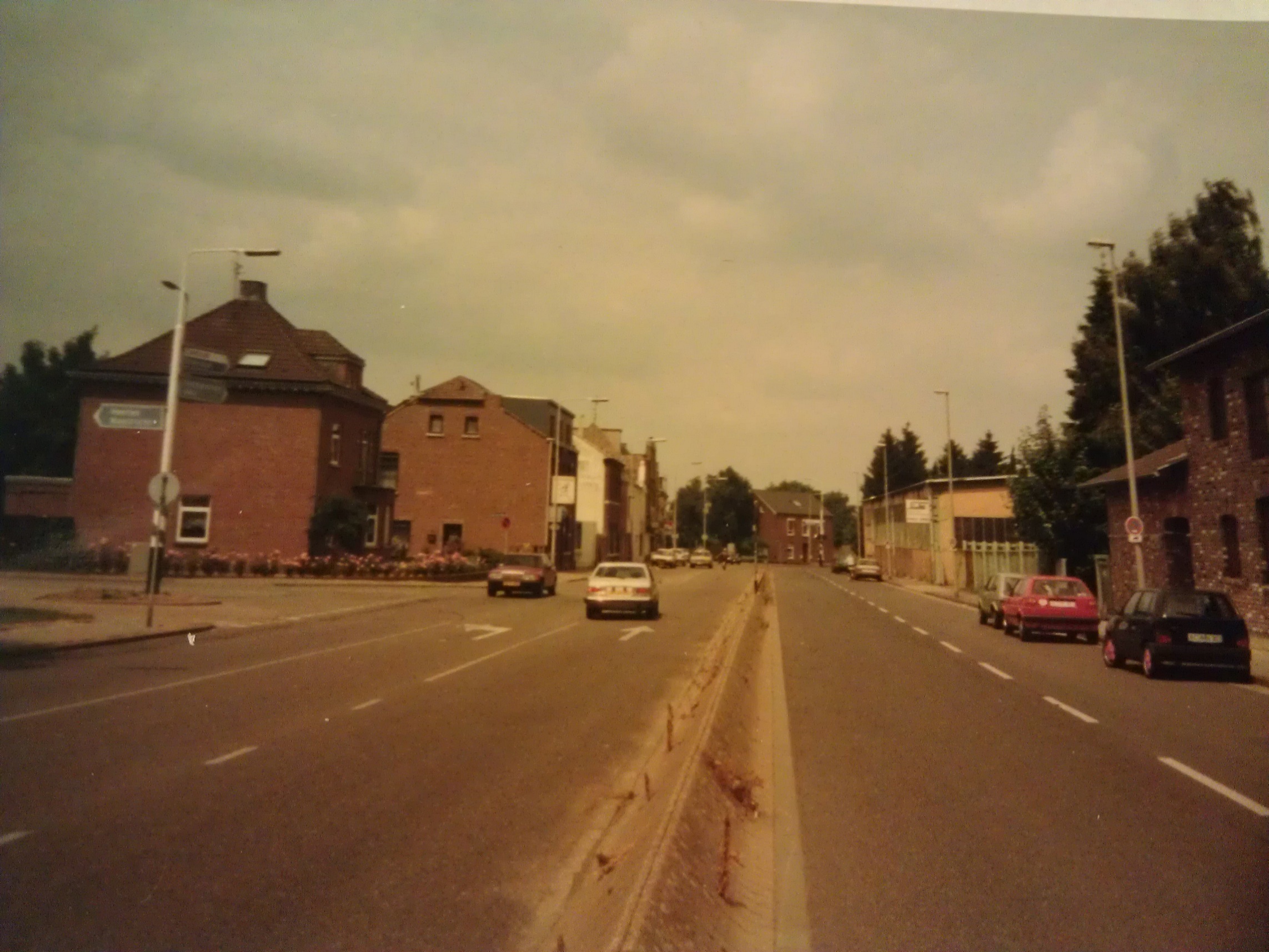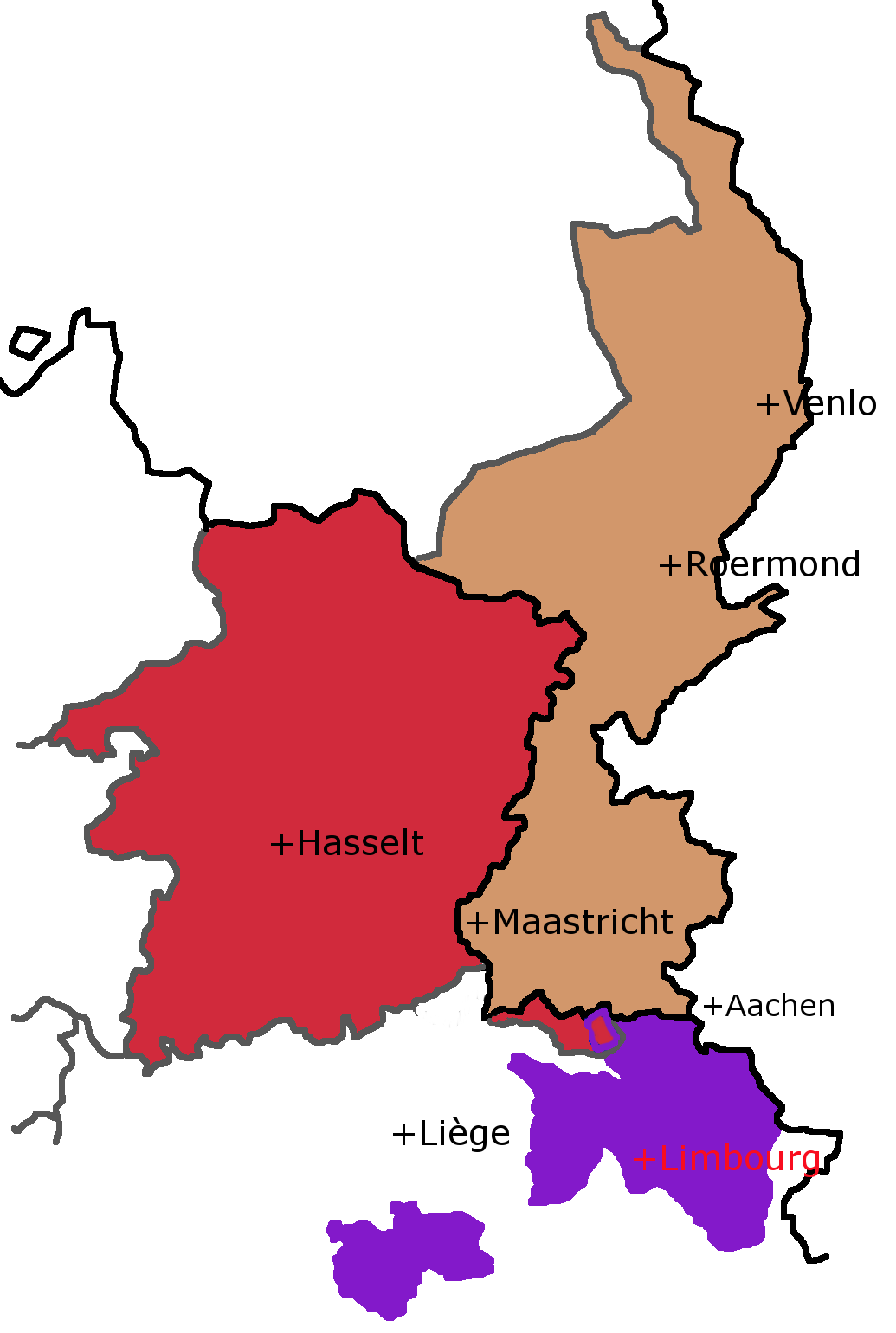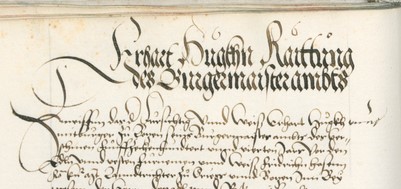|
Kerkrade
Kerkrade (; Kerkrade dialect, Ripuarian: ; ; or ''Kirchrath'') is a town and a Municipalities of the Netherlands, municipality in the southeast of Limburg (Netherlands), Limburg, the southernmost province of the Netherlands. It forms part of the Parkstad Limburg agglomeration. Kerkrade is the western half of a List of divided cities, divided city; until 1795 the city was part of the Austrian Netherlands and from 1795 to 1815 it was part of the First French Empire, French Empire. In 1815, the Congress of Vienna created the current Dutch-German border and divided the town into the Dutch ''Kerkrade'' and the Kingdom of Prussia, Prussian (Germany, German) Herzogenrath.Jan Buursink and Nicole Ehlers"The Binational City of Eurode". University of Nijmegen. This means that the eastern end of ''Kerkrade'' marks the international border. The two towns, including outlying suburban settlements, have a population approaching 100,000, of which nearly 47,000 are in Kerkrade. History The histo ... [...More Info...] [...Related Items...] OR: [Wikipedia] [Google] [Baidu] |
Kerkrade Dialect
Kerkrade dialect (natively or simply , literally 'Kerkradish', , Standard Dutch: , Standard German: meaning ''(the) dialect of Kerkrade'') is a Ripuarian dialect spoken in Kerkrade and its surroundings, including Herzogenrath in Germany. It is spoken in all social classes, but the variety spoken by younger people in Kerkrade is somewhat closer to Standard Dutch. The name is strictly a scientific term on both sides of the border. Especially on the Dutch side of the border, the speakers of the Kerkrade dialect consider it to be a Limburgish dialect (see Southeast Limburgish dialect) and call it ('Limburgish'), ('Kerkradish') or simply ('dialect'). Grammar Nouns There are three grammatical genders: masculine, feminine and neuter. The corresponding definite articles are , and . The plural form takes the feminine article regardless of the gender. The plural form of nouns is formed with by adding , or to the stem or by umlauting. Examples: - , - , - , ... [...More Info...] [...Related Items...] OR: [Wikipedia] [Google] [Baidu] |
Limburg (Netherlands)
Limburg (; ), also known as Dutch Limburg, is the southernmost of the twelve provinces of the Netherlands. It is bordered by Gelderland to the north and by North Brabant to the west. Its long eastern boundary forms the border with the German state of North Rhine-Westphalia. To the west is the border with the Belgian province of Limburg, part of which is delineated by the river Meuse. To the south, Limburg is bordered by the Belgian province of Liège. The Vaalserberg is the extreme southeastern point, the tripoint of the Netherlands, Germany, and Belgium. Limburg had a population of about 1,128,000 in January 2023. Its main municipalities are the provincial capital Maastricht (population 120,837 as of January 2022), Venlo (population 102,176) in the northeast, as well as Sittard-Geleen (population 91,760, bordering both Belgium and Germany) and Heerlen (population 86,874) in the south. More than half of the population, approximately 650,000 people, live in the south of Limb ... [...More Info...] [...Related Items...] OR: [Wikipedia] [Google] [Baidu] |
Herzogenrath
Herzogenrath (; ; ) is a municipality in the district of Aachen in the German state of North Rhine-Westphalia. It borders the Dutch town of Kerkrade, the national border in one section running along the middle of a main road and even directly through the centre of the cross-border Eurode office complex. History Herzogenrath began in the 11th century as a settlement called ''Rode'' near the river Wurm. In 1104, Augustinian monks founded an abbey, called ''Kloosterrade'', to the west of this settlement. It became s-Hertogenrode or s-Hertogenrade (Dutch: ''the Duke's Rode'') after the Duchy of Brabant took control of the region; in French it was called Rolduc (''Rode-le-Duc''). As is the case for many parts of Duchy of Brabant, Herzogenrath changed hands several times in the last few centuries. Together with the rest of the Southern Netherlands, it was under Spanish control from 1661, Austrian between 1713 and 1795 and French between 1795 and 1813. In 1815, when the ... [...More Info...] [...Related Items...] OR: [Wikipedia] [Google] [Baidu] |
List Of Municipalities Of The Netherlands
Since 1 January 2023, there have been 342 regular municipalities ( ; Grammatical number#Overview, sing. ) and three Caribbean Netherlands, special municipalities ( ) in the Netherlands. The latter is the status of three of the six island territories that make up the Dutch Caribbean. Municipalities are the second-level administrative division, or public body (Netherlands), public bodies (), in the Netherlands and are subdivisions of their respective provinces of the Netherlands, provinces. Their duties are delegated to them by the Cabinet of the Netherlands, central government and they are ruled by a municipal council (Netherlands), municipal council that is elected every four years. Municipal merger (politics), mergers have reduced the total number of municipalities by two-thirds since the first official boundaries were created in the mid 19th century. Municipalities themselves are informally subdivided into districts and neighbourhoods for administrative and statistical ... [...More Info...] [...Related Items...] OR: [Wikipedia] [Google] [Baidu] |
Wurm (Rur)
The Wurm (; ) is a river in the state of North Rhine-Westphalia in western Germany. It rises in the Eifel mountains and flows for 57 kilometres before discharging into the Rur. Geography The Wurm is a left (western) tributary of the Rur (). The Rur is a tributary of the Meuse. The sources of the Wurm are several brooks in the forests southwest of Aachen, which form the Wurm after the ''Diepenbenden'' reservoir. From there the Wurm nowadays flows through canals through the city of Aachen, until it resurfaces again at the ''Europaplatz'' in the east of Aachen. North of Aachen (between Kerkrade and Herzogenrath) the river forms the border with the Netherlands for approximately 10 km. It flows into the Rur near Heinsberg. Other towns on the river Wurm are Würselen, Übach-Palenberg and Geilenkirchen. The name ''Wurm'' is thought to originate from the German word ''warm'' (same meaning in English), as the source brooks were fed from the thermal springs in Aachen. Ga ... [...More Info...] [...Related Items...] OR: [Wikipedia] [Google] [Baidu] |
Municipalities Of The Netherlands
Since 1 January 2023, there have been 342 regular municipalities ( ; Grammatical number#Overview, sing. ) and three Caribbean Netherlands, special municipalities ( ) in the Netherlands. The latter is the status of three of the six island territories that make up the Dutch Caribbean. Municipalities are the second-level administrative division, or public body (Netherlands), public bodies (), in the Netherlands and are subdivisions of their respective provinces of the Netherlands, provinces. Their duties are delegated to them by the Cabinet of the Netherlands, central government and they are ruled by a municipal council (Netherlands), municipal council that is elected every four years. Municipal merger (politics), mergers have reduced the total number of municipalities by two-thirds since the first official boundaries were created in the mid 19th century. Municipalities themselves are informally subdivided into districts and neighbourhoods for administrative and statistical ... [...More Info...] [...Related Items...] OR: [Wikipedia] [Google] [Baidu] |
Parkstad Limburg
Parkstad Limburg (; Ripuarian language, Ripuarian and ) is a conurbation of seven municipalities of the Netherlands, municipalities in the southern part of the province of Limburg (Netherlands), Limburg in the Netherlands. Consisting of Heerlen, Kerkrade, Landgraaf, Brunssum, Simpelveld, Voerendaal and Beekdaelen, the municipalities work together to improve public services, transport, and housing on a regional level. This collaboration started in 1999. Within Parkstad, the city of Heerlen functions as the centre of economic and social activity, and to a lesser extent the cities of Kerkrade and Landgraaf function in the same regard as regional hubs. Land use The name Parkstad, Dutch for "Park City", is derived from the relative greenness of the towns, 94,17 km2 (53%) of its area used for non-urban purposes. However, only 10% of the area (roughly 17.8 km2) is forest and nature, 42% (roughly 74.96 km2) is used for agriculture. Previously, the area had been known as Oo ... [...More Info...] [...Related Items...] OR: [Wikipedia] [Google] [Baidu] |
List Of Divided Cities
A divided city is one which, as a consequence of political changes or border shifts, currently constitutes (or once constituted) two separate entities, or an urban area with a border running through it. Listed below are the localities and the state they belonged to at the time of division. Especially notable examples of divided cities are divided capitals, including Nicosia (since 1974), Jerusalem (1948–1967; ''de jure'' ongoing since 1948), Berlin (1949–1990) and Beirut (1975–1990). Former cities now divided Africa Americas Asia * Tell Abyad, divided along the Baghdad Railway under the Treaty of Ankara (1921), Treaty of Ankara in 1921 ** Tell Abyad, Syria ** Akçakale, Turkey * Arappınar, divided along the Baghdad Railway under the Treaty of Ankara (1921), Treaty of Ankara in 1921 ** Kobanî, Syria ** Mürşitpınar, Turkey *Astara, divided under the Treaty of Turkmenchay, Treaty of Turkmenchay (1828) **Astara, Azerbaijan **Astara, Iran * Dibba, Portugal, Portuguese ... [...More Info...] [...Related Items...] OR: [Wikipedia] [Google] [Baidu] |
Burgemeester
Burgomaster (alternatively spelled burgermeister, ) is the English form of various terms in or derived from Germanic languages for the chief magistrate or executive of a city or town. The name in English was derived from the Dutch . In some cases, burgomaster was the title of the head of state and head of government of a sovereign (or partially or de facto sovereign) city-state, sometimes combined with other titles, such as Hamburg's First Mayor and President of the Senate). Contemporary titles are commonly translated into English as ''mayor''. Historical use * The title "burgermeister" was first used in the early 13th century. * In history (sometimes until the beginning of the 19th century) in many free imperial cities (such as Bremen, Hamburg, Lübeck, etc.) the function of burgomaster was usually held simultaneously by three persons, serving as an executive college. One of the three being burgomaster in chief for a year (called in some cases in ; in ''presiding burg ... [...More Info...] [...Related Items...] OR: [Wikipedia] [Google] [Baidu] |
Kingdom Of Prussia
The Kingdom of Prussia (, ) was a German state that existed from 1701 to 1918.Marriott, J. A. R., and Charles Grant Robertson. ''The Evolution of Prussia, the Making of an Empire''. Rev. ed. Oxford: Clarendon Press, 1946. It played a significant role in the unification of Germany in 1871 and was a major constituent of the German Empire until its German Revolution of 1918–1919, dissolution in 1918. Although it took its name from the Prussia (region), region called Prussia, it was based in the Margraviate of Brandenburg. Its capital was Berlin. The list of monarchs of Prussia, kings of Prussia were from the House of Hohenzollern. The polity of Brandenburg-Prussia, predecessor of the kingdom, became a military power under Frederick William, Elector of Brandenburg, known as "The Great Elector". As a kingdom, Prussia continued its rise to power, especially during the reign of Frederick the Great, Frederick II "the Great".Horn, D. B. "The Youth of Frederick the Great 1712–30." ... [...More Info...] [...Related Items...] OR: [Wikipedia] [Google] [Baidu] |
Spanish Netherlands
The Spanish Netherlands (; ; ; ) (historically in Spanish: , the name "Flanders" was used as a '' pars pro toto'') was the Habsburg Netherlands ruled by the Spanish branch of the Habsburgs from 1556 to 1714. They were a collection of States of the Holy Roman Empire in the Low Countries held in personal union by the Spanish Crown. This region comprised most of the modern states of Belgium and Luxembourg, as well as parts of northern France, the southern Netherlands, and western Germany, with the capital being Brussels. The Army of Flanders was given the task of defending the territory. The Imperial fiefs of the former Burgundian Netherlands had been inherited by the Austrian House of Habsburg from the extinct House of Valois-Burgundy upon the death of Mary of Burgundy in 1482. The Seventeen Provinces formed the core of the Habsburg Netherlands, which passed to the Spanish Habsburgs upon the abdication of Emperor Charles V in 1556. When part of the Netherlands separated to ... [...More Info...] [...Related Items...] OR: [Wikipedia] [Google] [Baidu] |



